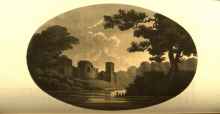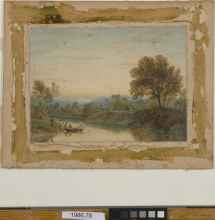Abergavenny Castle
The image depicts a broad, flat plain, interrupted at its further end by a grey body of water. In the distance, a low mountain range looms in vague, dark contours against the sky, nearly touching the cloud formations above. Small, white buildings, dwarfed by the mountains, cluster on the plain between the body of water and the mountain range.




